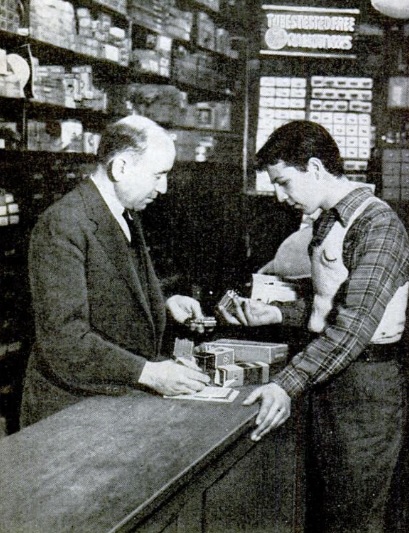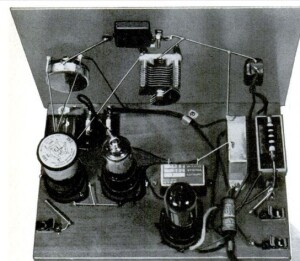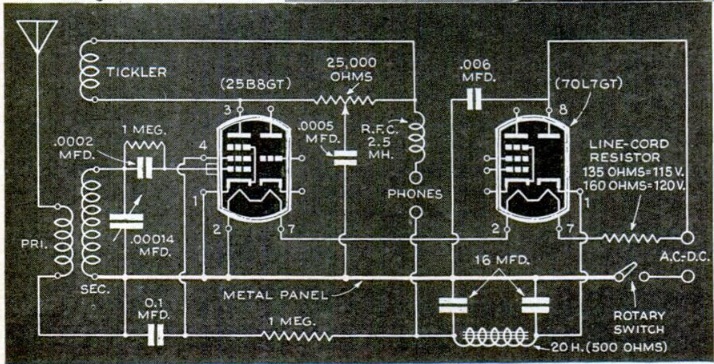 The young man shown above is now close to being a centenarian, but 80 years ago, he was buying some radio parts from his friendly local radio dealer. He was going to get his money’s worth out of those parts, since he planned to re-use all of them in several different projects, the first of which appeared in the September 1940 issue of Popular Science.
The young man shown above is now close to being a centenarian, but 80 years ago, he was buying some radio parts from his friendly local radio dealer. He was going to get his money’s worth out of those parts, since he planned to re-use all of them in several different projects, the first of which appeared in the September 1940 issue of Popular Science.
 The total expenditure for all of the projects would be $8.95, and this month, he was purchasing a number of components, including two tubes, a pentode-triode 25B8GT and a pentode-rectifier 70L7GT. This month, he was going to make the two-tube receiver shown below. This month, only one half of each tube would be used. The 70L7GT served as rectifier, and the pentode section of the 25B8GT was regenerative detector. In future months, the circuit would become more elaborate.
The total expenditure for all of the projects would be $8.95, and this month, he was purchasing a number of components, including two tubes, a pentode-triode 25B8GT and a pentode-rectifier 70L7GT. This month, he was going to make the two-tube receiver shown below. This month, only one half of each tube would be used. The 70L7GT served as rectifier, and the pentode section of the 25B8GT was regenerative detector. In future months, the circuit would become more elaborate.
The article noted that the capacitors could be soldered in place, but since the resistors would need to be moved around, it was best to attach them using clips so that the leads would be preserved.
The parts list reveals that this version of the set would tune 100-570 meters, meaning that it would cover the standard broadcast band, plus a few interesting signals higher in frequency.

